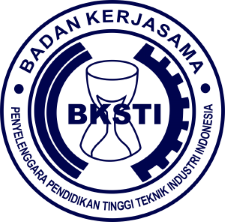Solar panel optimization using maximum power point tracking based on Artificial Bee Colony algorithm
Abstract
Full Text:
PDFReferences
A. B. Kebede and G. B. Worku, “Comprehensive Review and Performance Evaluation of Maximum Power Point Tracking Algorithms for Photovoltaic System,” Global Energy Interconnection, vol. 3, no. 4, pp. 398–412, 2020.
M.S.A., C. et al., “Maximum Power Point Tracking Using a Hybrid Fuzzy Logic Control”, vol. 10, no. 3, pp. 378–395, 2007.
M. R. Fanani et al., “Implementation of Maximum Power Point Tracking on PV System Using Artificial Bee Colony Algorithm”, 2020 3rd International Seminar on Research of Information Technology and Intelligent Systems (ISRITI), pp. 117–122, 2020.
H. A. Mohamed-Kazim et al., “Efficient Maximum Power Point Tracking Based on Reweighted Zero-Attracting Variable Stepsize for Grid Interfaced Photovoltaic Systems,” Computers and Electrical Engineering, vol. 85, p. 106672, 2020.
M. R. Adaryani, and A. Karami, “Artificial Bee Colony Algorithm for Solving Multi-Objective Optimal Power Flow Problem,” International Journal of Electrical Power and Energy Systems, vol. 53, pp. 219–230, 2013.
A. S. Benyoucef et al., “Artificial Bee Colony Based Algorithm for Maximum Power Point Tracking (MPPT) for PV Systems Operating Under Partial Shaded Conditions,” Applied Soft Computing Journal, vol. 32, 2015.
R. Pahlevi. Pengujian Karakteristik Panel Surya Berdasarkan Intensitas Tenaga Surya. 2014.
D. Suryana, and M. M. Ali, “Pengaruh Temperatur/Suhu Terhadap Tegangan Yang Dihasilkan Panel Surya Jenis Monokristalin (Studi Kasus: Baristand Industri Surabaya),” Jurnal Teknologi Proses dan Inovasi Industri, vol. 2, no. 1, pp. 49–52, 2016.
F. A. Widiharsa, “Karakteristik Panel Surya Dengan Variasi Intensitas Radiasi Dan Temperatur Permukaan Panel,” Transmisi, vol. 4, pp. 233–242, 2006.
S. Yuliananda et al., “Pengaruh Perubahan Intensitas Matahari Terhadap Daya Keluaran Panel Surya,” Jurnal Pengabdian LPPM Untag Surabaya, vol. 01, no. 02, pp. 193–202, 2015.
G. Wibisono et al., “MPPT Menggunakan Metode Hibrid JST Dan Algoritma Genetika Untuk Sistem Photovoltaik,” vol. 8, no. 2, pp. 181–186, 2014.
P. Joshi and S. Arora, “Maximum Power Point Tracking Methodologies for Solar PV Systems – A Review,” Renewable and Sustainable Energy Reviews, 2016.
H. Salmi et al., “Maximum Power Point Tracking (MPPT) Using Artificial Bee Colony Based Algorithm for Photovoltaic System,” International Journal of Intelligent Information Systems, vol. 5, no. 1, pp. 1–4, 2016.
D. W. Hart. Commonly used Power and Converter Equations. 2010.
B. K. Susanto. Desain dan implementasi konverter cuk dengan induktor terkopel untuk ripple arus masukan. 2017.
E. A. Hakim et al., “MPPT Menggunakan Algoritme Particle Swarm Optimization Dan Artificial Bee Colony,” Jurnal Nasional Teknik Elektro dan Teknologi Informasi, vol. 9, no. 2, pp. 218–224, 2020.
R. Divyasharon et al., “Artificial Neural Network Based MPPT with CUK Converter Topology for PV Systems under Varying Climatic Conditions,” IEEE International Conference on Intelligent Techniques in Control, Optimization and Signal Processing, INCOS, 2019.
S. Ramasamy and T. Subbaiya, “An Efficient Modified CUK Converter with Fuzzy Based Maximum Power Point Tracking Controller for PV System,” pp. 77–84.
DOI: http://dx.doi.org/10.62870/joseam.v1i1.17530
Refbacks
- There are currently no refbacks.

is supported by
This work is licensed under Creative Commons Attribution-ShareAlike 4.0 International



